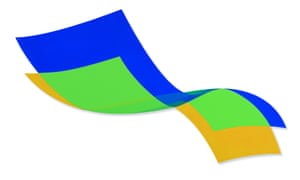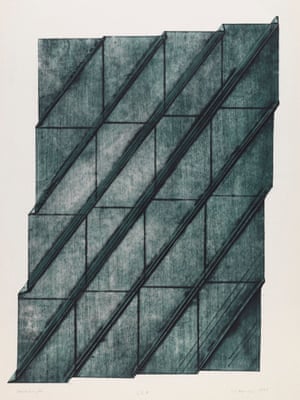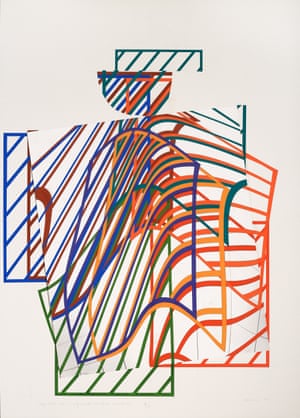Dóra Maurer once told me all art is participatory.
A special example form my home country of Hungary. Meet the influential artist, teacher, and curator Dóra Maurer. Her work represents a kind of interdisciplinary thinking and experimentation my generation grew up with. Her medium ranged from film and photography to painting, performance and sculpture. Throughout multiple generations, from the isolated region of Hungary only handful of artists’ work became known internationally. Dóra Maurer, like many of her contemporaries have worked with minimal resources and simple materials available, yet aimed high to initiate change. Her work was either celebrated or prohibited. Now at TATE her retrospective is on view until July 5, 2020. https://www.tate.org.uk/whats-on/tate-modern/exhibition/dora-maurer
Dóra Maurer review – the dissident who rebelled in colour
Tate Modern, London
From black and white films made in her kitchen to glorious geometric designs, the Hungarian artist’s career has blossomed since the end of communist rule

Dóra Maurer’s impressive creativity since the end of Soviet control and communist one-party rule in Hungary in 1989 is an exception to a dispiriting rule. Many creative artists whose imaginations rebelled against the communist states of eastern Europe faded after their countries became democratic. Was the challenge of dissidence a spur to creativity? Or is capitalist democracy destructive in its own banal, populist way? The novels of Milan Kundera and films of Jan Švankmajer are examples of that lost urgency, and – in Švankmajer’s case – funding, after the fall of communism. So it’s heartening that Maurer, who spent much of her life making dissident art in a totalitarian state, has done her best work since that state collapsed.
It’s worth looking at her artistic life backwards. Go right to the end of Tate Modern’s enlightening, and free, survey of her subversive career to be delighted by the paintings she does today. Maurer’s flights of colour include interleaving waves of blue, green and yellow, curves of red rushing towards blue and orange rectangles, and interlapping grids of too many colours to count. The most recent of these joyous paintings that spin off across walls and around corners as they defy the idea of a closed picture surface is dated 2016. Maurer, born in 1937 in Budapest, is in the swim of creativity today and producing paintings that are simultaneously installations, with hard, bright geometries knocked sideways by some crazy libertarian impulse.

Not that her early experiments are ever less than intelligent. The birth of conceptual art in the late 1960s was inspired by mayhem on the streets. While 1968 saw revolutions in Paris and Prague, artists rejected the commodified art object and declared that art could be a walk, a verbal proposition, or in Maurer’s case, a paving stone. Her 1971 work What Can One Do with a Paving Stone? is a sequence of black and white photographs of her playing with a slab of stone on a river bank. She wraps it, unwraps it, cradles it and ties it up. Just as British artist Richard Long was making temporary arrangements of sticks and stones, Maurer used this found object to create an ephemeral interactive sculpture. But a paving stone is not a pile of pebbles. It was a symbol of revolution: paving stones were often ripped up and thrown in street protests.
The Hungarian revolution against the Soviet-imposed regime in 1956 had been so brutally crushed that even in the 1970s it took courage to hint at rebellion. Maurer’s dissident art finds freedom in using unlikely materials in cussedly individualist ways. To create her 1975 print Seven Foldings, she scratched and bent a metal printmaking plate then covered it in ink and printed from it. The image she made of this ruined object is a curiously beautiful veil of grey interrupted by slanting black bars.
Maurer made her art with kitchen-table methods that rejected the system and refused to participate in it. Yet the results have a haunting, formal beauty. In her black and white films, she watches shadows on a cup, folds in cloth or spins her camera round her flat. The rudimentary methods produce elegant and witty results. You can see how this art grew out of resistance. To create beauty with a bit of wire or make a film in your kitchen is to win a secret space of freedom.

The work that most vividly evokes that atmosphere of underground fun is Maurer’s 1977 piece Parallel Lines, Analyses. In two layers of photographs we see two photographers running along opposite balconies of a block of flats in Budapest, snapping each other as they go. It’s like a communist version of Ed Ruscha’s photobook Every Building on the Sunset Strip, except instead of motels and gas stations we see grey ranks of flats.
As the cold war approached its close in the 1980s, and with travel between east and west easier, Maurer discovered a new way to be free. In 1983, she was commissioned to paint in a medieval tower in Buchberg in Austria. She invented what she calls “space paintings”, dynamic installations that are half way between canvas and mural – and she hasn’t looked back. The passion for geometric design and love of disorder that collide in her conceptual art are indulged with glorious energy in her paintings.
In today’s anxious world, where even a museum on a Sunday afternoon is not a safe space, it’s a joy to see this optimistic art. You could almost come away with the idea that the world has got better, not worse, in recent decades.
Article from https://www.theguardian.com/artanddesign/2019/aug/05/dora-maurer-review-tate-modern-london